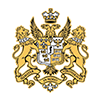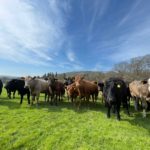As the nights get longer and the weather gets colder it is unsurprising that a sense of gloom can affect us – more so this year than any. Having said goodbye to the warm days of summer and the associated migrant birds which are now in Africa, there is a compensatory arrival from the north as we play host in the UK to many species which have come to enjoy a feast of berries along with a less severe climate than would be the case on the Continent or Scandinavia for example.
Two species of thrush are particularly noticeable as they move from hedgerow to hedgerow, making the most of the bounty available to them. The larger of the two, the Fieldfare is about the size of a Blackbird but easily identified by its grey head and rump, divided by a maroon-coloured mantle. In flight, Fieldfares show a lot of white under the wing and have a very characteristic ‘shack-shack’ call.
They breed throughout Eastern Europe and right up to northern Norway.
Fieldfares are very often found mixed in large flocks with their smaller relatives, Redwings. Both species are drawn to berries including those of hawthorn, rowan and even more exotic plants such as pyracantha.
Redwings are the size of a Song Thrush and perhaps not as obvious as Fieldfares but a good view shows a broad white eyebrow (or supercilium) which is one of the most distinctive features. The name of the species refers to the rusty-red colour to the under-wing coverts which spreads down to the flank.
They also have a distinctive ‘quip’ call and a very high pitched piping sound which can be heard when they migrate at night.
Redwings visiting Britain may have originated from Scandinavia or possibly Iceland where they are very common. A small number are resident in the Scottish Highlands.
Both of these species can be seen in large gatherings around the Rhug Estate between October and March.
All images and words © Keith Offord www.keithofford.co.uk






 Organic Beef
Organic Beef